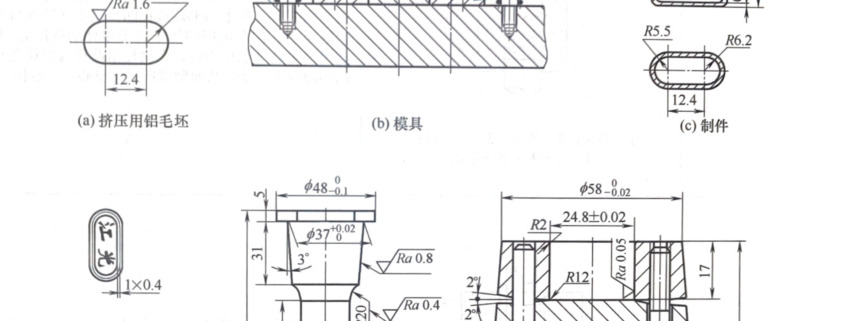What is a cold extrusion die
1.1.6 What is a cold extrusion die
Using the principle of plastic deformation of metal materials, under the condition of room temperature, put the cold metal blank into the mold cavity, force the metal blank to produce plastic flow under the action of strong pressure and a certain speed, and extrude the hollow or solid parts with a smaller section than the blank section through the gap between the punch and the die or the outlet of the die, This die is called cold extrusion die (as shown in Figure 1-7, it is the reverse extrusion die for the aluminum shell of lighter). The cold extrusion process is divided into forward extrusion, reverse extrusion, composite extrusion, reducing extrusion, radial extrusion, oblique extrusion and upsetting extrusion, as shown in table 1-5.
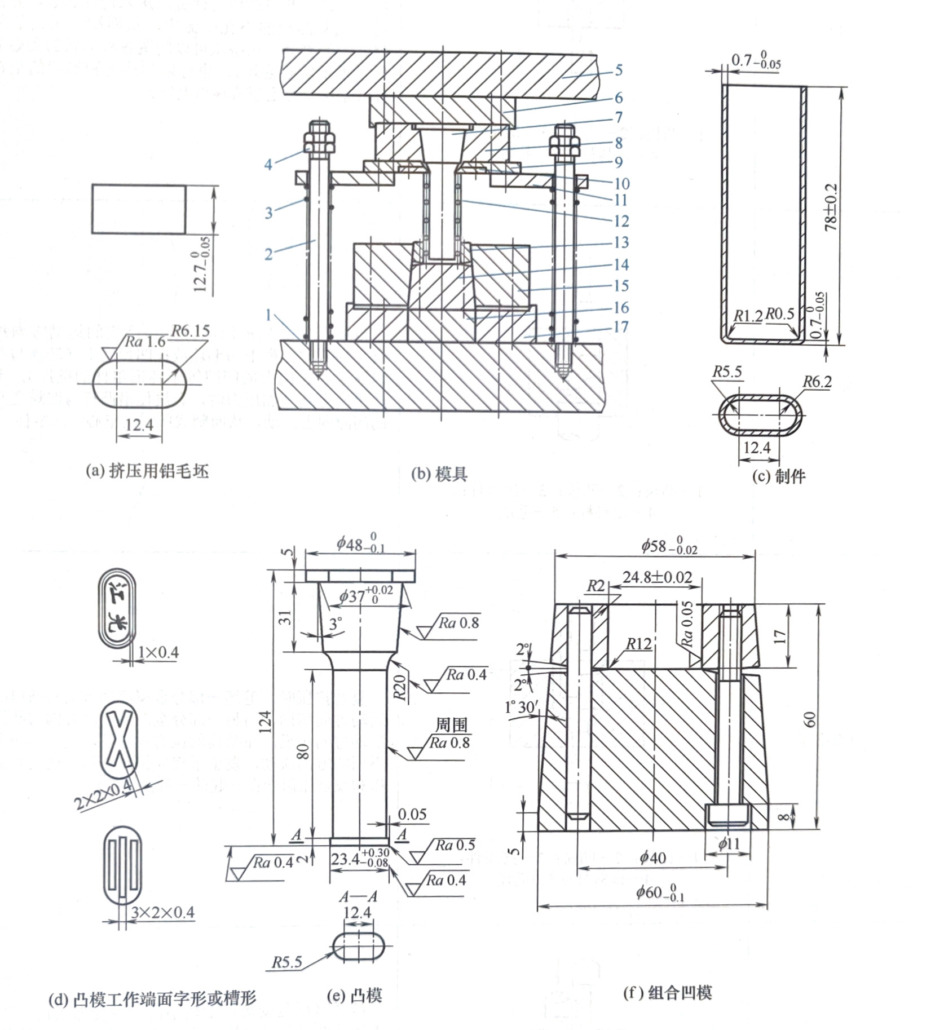
Figure 1-7 back extrusion die for aluminum shell of lighter
1. Lower mold base; 2 a screw; 3. A spring; 4 a nut; 5 – upper die base; 6 – thickened hardened base plate; 7 – punch; 8 – punch fixing plate; 9 – unloading plate;10 – unloading ring; 11 one connecting plate; 12 one extrusion (workpiece); 13 upper die; 14 lower die; 15 – die fixing ring; 16 – cushion block; 17. Die holder
Table 1-5 cold extrusion process
| Process name | Drawing | Characteristics and application scope |
| Forward extrusion | 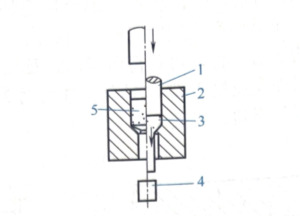
1 punch; 2 a female die; 3 – extrusion: 4 – ejector rod; 5 one blank |
During forward extrusion, the flow direction of metal is the same as that of punch. When processing, first place the blank in the die, and there is a hole on the bottom of the die with a size equivalent to the outer diameter of the part, and then use the punch pressure method to extrude the blank. The pressure of the punch makes the metal enter the plastic state and forces the metal to flow out of the small hole of the die, so as to make the required workpiece. Generally speaking, forward extrusion can produce solid parts of various shapes (using solid blanks) and hollow parts of various shapes (using hollow blanks or cup blanks) |
| Back extrusion | 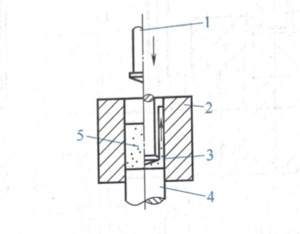
1 punch; 2 a female die; 3 – extrusion: 4 – ejector rod; 5 one blank |
During reverse extrusion, the flow direction of metal is opposite to that of punch. During machining, place the flat blank on the bottom of the die (the gap between the die and the punch in the radial direction is equal to the wall thickness of the cup-shaped part). When the punch applies pressure to the blank, the metal will flow upward along the gap between the punch and the punch, so as to make the required hollow cup-shaped part |
| Compound extrusion | 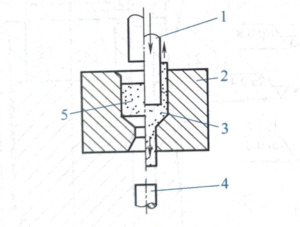
1 punch; 2 a female die; 3 – extrusion: 4 – ejector rod; 5 one blank
|
During compound extrusion, the flow direction of part of the metal in the blank is the same as that of the punch, while the flow direction of the other part of the metal is opposite to that of the punch. Under the pressure of the punch, the metal flows in two different directions, and bidirectional extrusion deformation occurs. This is an extrusion method combining forward extrusion and reverse extrusion |
| Reducing extrusion | 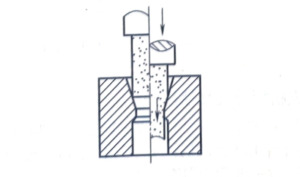 |
Reducing extrusion is a kind of abnormal forward extrusion method with less deformation, and the blank section is only slightly reduced. Reducing extrusion is mainly used to manufacture stepped shaft parts with small diameter difference and as the finishing process of deep hole cup parts |
| Radial extrusion | 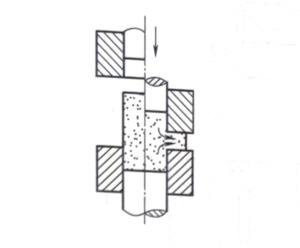 |
During radial extrusion, the flow direction of metal is perpendicular to the moving direction of punch. Radial extrusion is divided into centrifugal extrusion and centripetal extrusion, which are mainly used to manufacture gear blanks with shoulders and cross shaft parts |
| Oblique extrusion | 
1 punch; 2 a female die; 3 – extrusion: 4 – female die insert |
During oblique extrusion, the flow direction of the metal is inclined or bent to the moving direction of the punch |
| Upsetting extrusion | 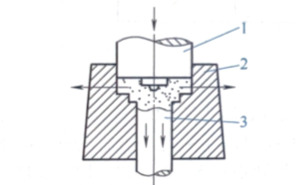
1 punch; 2 a female die; 3. Extrusion |
During deformation, the metal flow has the characteristics of extrusion and upsetting, that is, part of the metal flows along the axial direction of the punch, and the other part flows along the radial direction. It is a forming method combining cold heading and cold extrusion. Upsetting extrusion method is mainly used to manufacture large head parts and stepped shaft parts |

